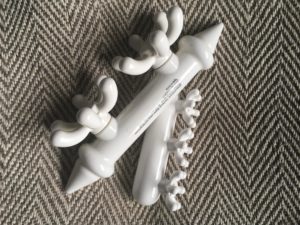What Myofascial Release Can Help With
Myofascial Release (MFR) is a specialised manual therapy technique that has gained significant attention for its role in addressing a variety of physical issues and ongoing chronic pain. MFR focuses on the fascia—a thin, tough connective tissue that surrounds and supports muscles throughout the body. When the fascia becomes tight or restricted, either due to injury, inflammation, trauma, or poor posture, it can cause pain, discomfort, and dysfunction. Myofascial Release aims to gently stretch and mobilise these tissues, relieving tension and restoring function.
Understanding Fascia and Myofascial Pain
Fascia is an uninterrupted web of connective tissue that runs from head to toe, encasing muscles, bones, nerves, and organs. Imagine it as a body-wide suit of elastic, flexible tissue. If this suit becomes restricted due to trauma, overuse, inactivity, or inflammation, it can lead to what is known as myofascial pain syndrome. Symptoms often include persistent pain, tenderness, limited range of motion, and a sensation of tightness or knots in the muscles.
Myofascial pain is different from other types of pain because it doesn’t always follow the path of nerves or blood vessels. Instead, it can refer pain to other areas of the body—a phenomenon known as trigger points. Myofascial Release targets both the site of discomfort and these referred pain patterns by releasing restrictions in the fascia.
Common Conditions Helped by Myofascial Release
Myofascial Release is not a cure-all, but it holds promise for a range of conditions, either as a standalone treatment or in conjunction with other therapies. Here are some of the most common issues MFR can help with:
1. Chronic Pain
Myofascial Release is widely used for chronic pain management. This includes headaches, back pain, neck pain, pelvic pain, and fibromyalgia. By releasing fascial restrictions, MFR can decrease pain sensitivity, break the cycle of chronic discomfort, and improve overall quality of life.
2. Musculoskeletal Dysfunction
Many musculoskeletal complaints, such as muscle tightness, joint stiffness, and postural imbalances, are related to fascial restrictions. MFR works to restore alignment, improve mobility, and enhance muscle function. This is especially helpful for conditions like:
- Lower back pain
- Sciatica
- Shoulder pain and frozen shoulder
- Knee and hip pain
- Plantar fasciitis
- Tennis elbow / Golfer’s elbow
3. Sports Injuries
Athletes often experience overuse injuries, strains, sprains, and repetitive motion syndromes. Myofascial Release can help accelerate recovery, reduce pain, and prevent re-injury by promoting healthy tissue and improving flexibility.
4. Post-Surgical Recovery
Scar tissue can cause fascial restrictions, leading to pain and limited movement after surgery. MFR is used in post-operative rehabilitation to soften scar tissue, restore range of motion, and decrease stiffness.
5. Headaches and Migraines
Tension-type headaches and some migraines are linked to tightness in the fascia of the head, neck, and shoulders. Myofascial Release can relieve these restrictions, reducing the frequency and intensity of headaches.
6. Temporomandibular Joint (TMJ) Dysfunction
TMJ disorders, which cause jaw pain and dysfunction, often have a myofascial component. Gentle release of the facial and jaw muscles can ease pain, improve jaw movement, and reduce associated symptoms such as earaches or headaches.
7. Postural Problems
Poor posture, whether due to sedentary lifestyle or repetitive activities, can cause fascial shortening and imbalance. MFR helps restore postural alignment and teaches the body healthy movement patterns.
8. Stress and Tension Relief
Fascial restrictions can develop due to emotional tension and stress. Many people experience a deep sense of relaxation during Myofascial Release, which can help lower stress levels and promote overall mental well-being.
9. Limited Mobility
People recovering from sprains, fractures, or immobilisation often experience tightness or reduced movement in affected areas. MFR gently restores suppleness to the fascia, making movement easier and more comfortable.
10. Fibromyalgia
This chronic condition is characterised by widespread pain, tenderness, fatigue, and sleep disturbances. Myofascial Release is often incorporated into fibromyalgia management to reduce soft tissue pain and improve quality of life.
How Myofascial Release Works
During a Myofascial Release session, the therapist uses sustained gentle pressure, applied by hand or with specific tools, to stretch and release restrictions in the fascia. Unlike traditional massage, which works on muscles, MFR focuses specifically on the connective tissue. The techniques are usually slow and deliberate, allowing the tissue to gradually lengthen and relax.
Sessions can be targeted to specific problem areas or used for whole-body relaxation. Myofascial Release can be performed directly on skin or through light clothing. Self-care techniques, such as using foam rollers or balls, are often taught for maintenance between sessions.
Who Can Benefit from Myofascial Release?
Myofascial Release is suitable for people of all ages and activity levels, from athletes and manual labourers to those recovering from injury or living with chronic illness. It can be especially helpful if you:
- Have persistent muscle pain or tension that doesn’t resolve with other forms of treatment
- Experience pain that radiates or “travels” to different areas
- Notice knots or tender spots in your muscles
- Suffer from tension headaches or jaw pain
- Have limited flexibility or range of motion
- Are recovering from injury or surgery
Myofascial Release and Holistic Wellness
Myofascial Release is often a component of integrative health and wellness plans. Its benefits may include:
- Improved body awareness and alignment
- Enhanced athletic performance
- Reduced anxiety and better sleep
- Greater sense of relaxation and well-being
- Prevention of future injuries or dysfunction
Many people find that regular Myofascial Release helps them feel more connected to their bodies and better able to manage stress—a testament to the deep interconnection between physical and emotional health.
I highly recommend looking at the video on You Tube below. It explains and illustrates what myofascial connective tissue is. Be warned, it looks a bit ‘gory’ as there is some dissection going on!
These tools I use are really effective during a Myofascial Release treatment.


